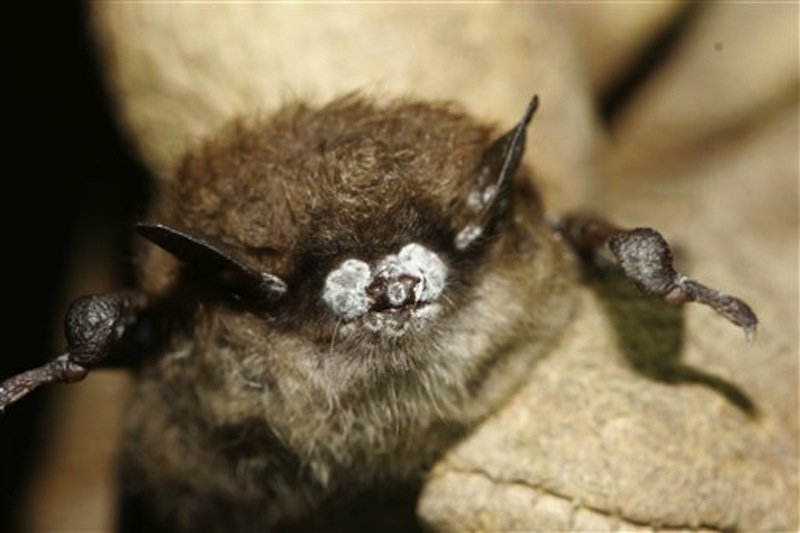MONTPELIER, Vt. — A national organization of recreational cavers is questioning a new estimate of the number of bats killed by a mysterious ailment that is spreading across the country.
The estimate by state and federal scientists said 5.7 million to 6.7 million bats had died across the Northeast from what’s known as white nose syndrome. But that estimate, released this month, is flawed and could lead to unnecessary restrictions on access to caves across the country, said Peter Youngbear, a Vermont-based official with the National Speleological Society.
“This is extremely important as this number is likely to drive significant wildlife and land management decisions,” Youngbear wrote in a letter to the director of the U.S. Fish and Wildlife Service.
Decisions about closing caves, which would impact local economies, will be made based on the estimates, he pointed out.
“It is imperative that it be as accurate and defensible as possible,” Youngbear wrote.
The federal government defended the estimate. If anything, it’s too low, said Ann Froschauer, the Fish and Wildlife spokeswoman on white nose issues.
“The group of biologists from the Northeast and from university and research institutions that came together have many, many years of experience in working with bats,” she said.
White nose is caused by a fungus that prompts bats to wake from their winter hibernation and die when they fly into the winter landscape in search of food that isn’t there. First spotted in New York six years ago, it’s been found in 16 states and four Canadian provinces.
It’s nearly wiped out some species. One of the hardest-hit is the little brown bat, once the most common bat in the Northeast and found across the country, in much of Canada and north into Alaska.
So far, biologists have been unable to prevent its spread.
“The spread is epic at this point. We’re halfway across the country,” Froschauer said. “… We have no indication it’s slowing down.”
The federal government has closed caves and mines that it controls and where bats hibernate, but it doesn’t have the authority to close caves on private property or those owned by the states or other federal agencies.
Froschauer acknowledged that recreational cavers are frustrated.
The Alabama-based Speleological Society has about 10,000 members nationwide and more than 200 chapters. The organization has helped study white nose and it is committed to “limiting its impact on cave organisms” while ensuring restrictions on cave access are warranted.
The group doesn’t believe the science supports the increase from a previous estimate of about 1 million dead bats.
“We just haven’t seen those mass bat mortalities. We saw them early on. So either last year’s number was grossly understated and we should know why or something else is amiss here,” Youngbear said.
Youngbear said his organization had voluntarily closed caves it controls across the Northeast and it’s encouraging responsible caving, such as disinfecting equipment before moving from one cave to another or using separate equipment.
Though his group doesn’t believe closing caves stops the spread of disease, “that doesn’t mean we shouldn’t take precautions,” he said. “We strongly support cleaning and decontamination protocols for any bat researcher and anyone going into a cave.”
The 16 states where the disease has been found are: Connecticut, Indiana, Kentucky, Maine, Maryland, Massachusetts, New Hampshire, New Jersey, New York, North Carolina, Ohio, Pennsylvania, Tennessee, Vermont, Virginia and West Virginia.
Send questions/comments to the editors.



Success. Please wait for the page to reload. If the page does not reload within 5 seconds, please refresh the page.
Enter your email and password to access comments.
Hi, to comment on stories you must . This profile is in addition to your subscription and website login.
Already have a commenting profile? .
Invalid username/password.
Please check your email to confirm and complete your registration.
Only subscribers are eligible to post comments. Please subscribe or login first for digital access. Here’s why.
Use the form below to reset your password. When you've submitted your account email, we will send an email with a reset code.